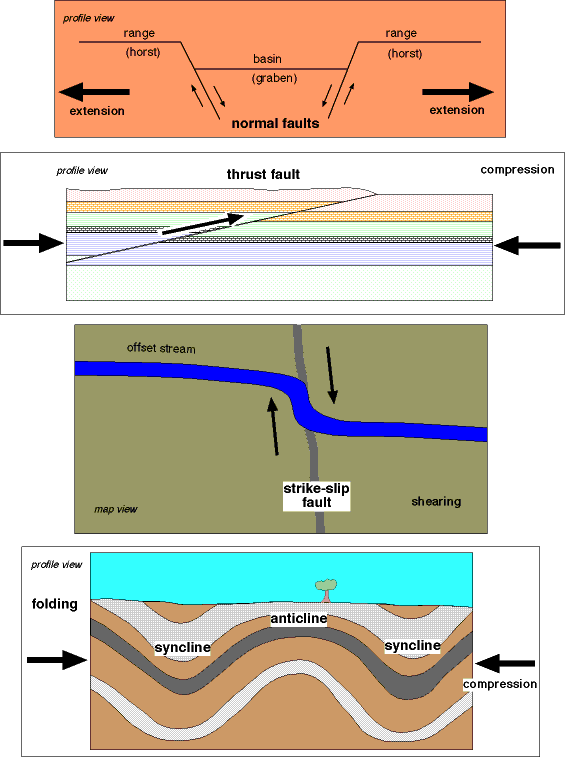
Joints
Fractures (cracks) with no movement of rock along them. Signify that the rocks have been under stress. Joints are often found as sets of parallel fractrues. Typically, the greater the stress the rocks were exposed to the closer are the joints. Joints may also form by stress release if uncovered rapidly from depth by uplift and erosion. The expansion of the rock mass upon unloading results in formation of joints.
Joints are conduits for the seepage of water thereby focussing weathering effects. Local weathering, ersosion, and the resulting topography may follow the pattern of jointing of the bedrock.
Faults
Fractures with movement along the fracture resulting from applied tectonic stresses. The sense (type and direction) of the applied stress can be determined from the sense of fault movement.
In extension with the crust being pulled apart, high angle (~60°) normal faults form in which the upper (hanging wall) block slides down the fault surface. Stretched and normal-faulted continental areas typically display basin and range style topography.
In compression with the crust being squeezed together, low angle (~30°) thrust faults and high angle (~60°) reverse faults form in which the upper block is driven up the fault surface.
In shearing stress vertical (~90°) strike-slip faults form and the crustal blocks move side-by-side without any up-down motion.
Folds
Sedimentary layers are folded in areas of compression often forming a series of downfolds (anticlines) and upfolds (synclines). The folds form at right angles to the applied compressive stress, just as if you push on one (or both) side of a rug or piece of paper. Folds may be upright or lie partly or wholly on their side. Fold axes my be horizontal or plunge.
Foliations
Metamorphic foliations such as slaty cleavage, schistosity, and gneissic banding also form at right angles to the applied compressive stress.
Continental regions that have been compressed by tectonic forces are typified by thrust faults, folding, and foliations (generally from higher structural levels to lower). Erosion of folded and faulted sedimentary strata in such regions generates valley and ridge style topography.
